For the first installment in the “What’s The Point Of” series, we’ll look at the lead trumpet of a jazz orchestra.
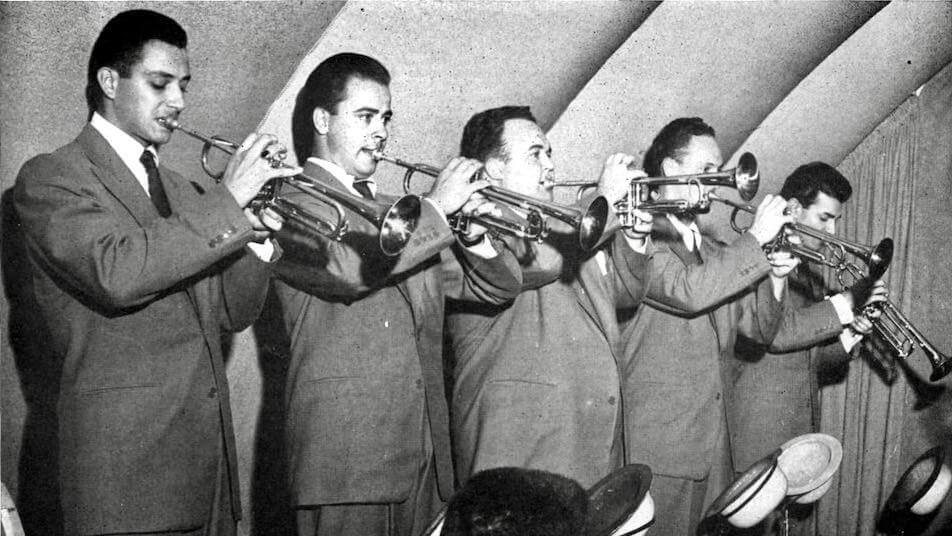
A typical big band has around 17 musicians and each one brings to the table with them a distinct voice and a lifetime of unique experience. Every single note in the arrangement, be it part of a line or a single hit, can be interpreted the same numbers of ways as the number of players in the band. A quarter note is not simply long or short. Forte is not simply loud.
To bring all the voices together in sync as an actual orchestra, someone has to be in charge to lay it all down, and that someone is the lead trumpet.
The top note of a voicing is the melody
In arranging, including voicing for chordal instruments like piano and guitar, there is a near universal principle that says the top note of a voicing is what our ears interpret as the melody. This has to do with overtones, acoustics, frequencies–all kinds of Magical Science Things. Whatever is on top of a voicing is what we hear stand out; our ears grab onto that note, so it’s important that there is consistency from the one who produces it. As the top soprano instrument in the big band, lead trumpet is where the melody ultimately is conveyed. If trombone 3 or alto 2 tries to “play lead” in their range, they’ll never be heard like a lead trumpet. Acoustics favor the lead trumpet every time.
(Note: This is why certain voicings are generally avoided, like a half step between the top two notes, or a b9 between the lead note and a lower note–these types of voicing create extremely dissonant and unstable intervals that make it difficult for our ears to “isolate” the lead melody, and as you might expect, they make it difficult for the lead player to find their pitch and play the correct partial or keep it in tune.)
Thus, it is unavoidable that the lead trumpet is the most important voice in the orchestra. Because of this, every other instrument must defer to the lead player for a sense of dynamic levels and note duration minutia. Phrasing must lock into the lead player’s breathing patterns. The length of each quarter note and 8th note must match the lead player’s sense of spacing. The length of a doit or fall-off has to keep up with the lead player (while still giving them a fraction of a second to have the “last word.”)
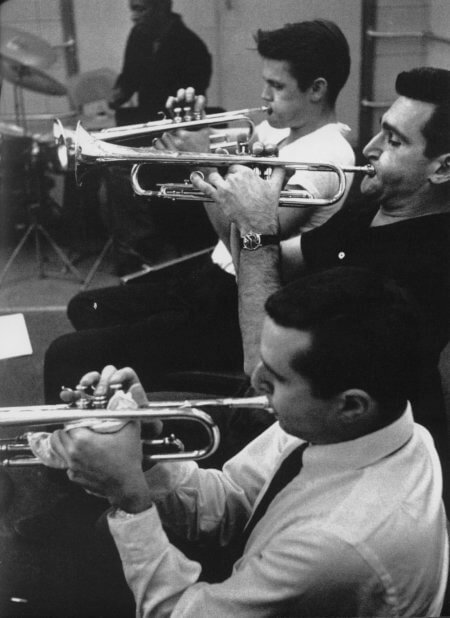
Understanding lead trumpet is all about listening
The Pantheon of Lead Trumpet – Al Porcino, Snooky Young, Conrad Gozzo, and Conte Candoli – are the best teachers to start with. Listening to them and playing along with them gets the sounds in your ears and the style in your soul. Al Porcino is my personal favorite: he never clips a quarter note too short, he blows through phrases like a singer, and he plays commandingly without going wild on dynamics. The Bill Holman album In a Jazz Orbit has Porcino on lead and is one of the definitive lead trumpet recordings–Porcino’s playing is subtle, swinging, and organic, and should be a quintessential example to any aspiring lead trumpeter today.
It’s important to point out that a high note trumpet player is not the same as a lead player. Maynard Ferguson had killer high notes, but he rarely played lead. He was a soloist who could extend his lines into the upper register. Al Porcino, on the other hand, very rarely took a solo; his job was to lead and keep the orchestra tight. From this interview later in his career:
Tell most big band trumpeters from the ’50s that you dig jazz, and they’ll likely correct you by saying that they didn’t play jazz. A majority of musicians who played in the trumpet sections of prominent bands viewed themselves as highly skilled readers who added a particular flavor to the whole ensemble, not improvisers. Except, that is, the fourth trumpet, who usually played the jazz solos. Al Porcino was a first chair trumpeter, and his job was to lead the pack by playing a song’s melody, which typically appeared as the top note.
JW: What’s the job of a first trumpet?
AP: You play the melody, and your horn is heard on top of the band. You’re the high note. As a result, you can’t afford to make a mistake. If you’re in the section, a clam [mistake] won’t matter that much. It’s hidden by the other trumpets’ notes. But the first trumpet is different. Everyone hears him. It’s a lot of pressure.
A lead trumpet player is prepared to play hard every day
Performing the most physically demanding book in the band requires stamina and readiness, and as a result, playing lead is a full-time job, a lifestyle almost. Everything revolves around staying in shape. This includes keeping your mind in shape, regularly working out your sightreading chops and being familiar with new music releases and the evolution of styles.

For everyone else in the band, your job is to listen carefully to the lead player. If you can’t hear them, you are too loud. Your notes must match the lead player’s in terms of length and dynamics. Your falls must keep up with the lead player, but always give them the last fraction of a second. Don’t bend a note when the lead player doesn’t. Tune to them.
Role of 2nd trumpet
2nd trumpet, you are the ultimate wingman here. You must be a proficient lead player yourself. Your job is to mind meld with the 1st player, anticipating their cutoffs, stepping up to their dynamics, and generally being a trustworthy 2nd-in-command. There are moments where the arranger lets the lead player rest and puts the short term lead responsibilities in your part–this is not your moment to show off or overplay, it’s your moment to not let anyone think the regular lead player took a break. You have a very important and functional role, and it’s to support the lead player at all times. Especially because it’s likely that on the next session, that lead player is now your 2nd player. Build a relationship with them. They’ll offer you work in the future and you’ll get better with them. In some ways, the 2nd trumpet is almost as important as the 1st trumpet.
Role of the bassist
If you are a bassist, your tuning and timing is the primary thing you offer, and this includes chord clarity. Opt for simpler chord outlines over something muddier and “jazzier” when you know the lead trumpet is in.
Role of the drummer
The drummer has the most integral role connected to the lead player. If you are a drummer, never play louder than the lead player. The melody comes from the lead player, so don’t overplay or you’ll force them to play louder, which wears them down and creates resentment. Make sure setups are clear and proportional, never make a lead trumpet feel like they are crashing in on a high, exposed note; it creates doubt and wears the chops down. Drummers and lead trumpet players have to work together more than almost any other pairing in the orchestra.
Role of the director
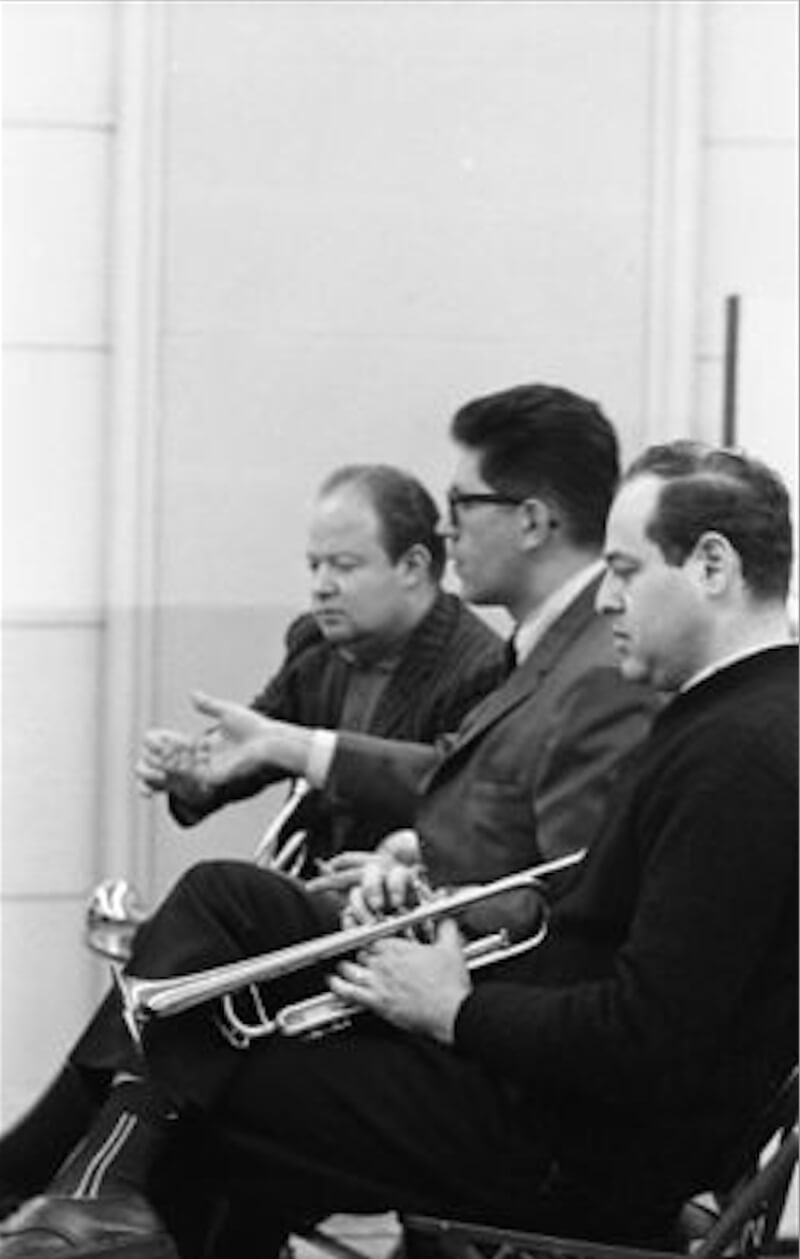
Directors, don’t overwork your lead players in rehearsals or soundchecks. Those events have specific functions. Rehearsals are for getting players to understand the compositions and their role within it, not for forcing players to practice a tricky passage. That is work they can do at home. They need to know the timing of sections, roadmap information, etc. Don’t make them overplay. Soundchecks are also not times for rehearsing, or for performing. Soundchecks are to get the minimum and maximum dynamic levels. So let your lead player go nuts for a few seconds, but don’t push them. In general, steer them in the right direction by putting them on to the great lead players more than the great high note soloists.
A happy lead trumpet player is one who doesn’t have to play too loud. They have a 2nd trumpet that can also play lead and support them in tight passages and on punctual hits, and take over when they are tired. They have a lead trombone who never pushes them too far. They have a lead alto who locks in on shout sections. They have a bassist who plays with clarity and good time. They have a drummer who doesn’t overplay and sets them up to play hits with confidence. And they have a director who uses wisdom and restraint when working with them.

With everyone understanding what a lead player needs, and a lead player knowing how to effectively produce the melodic material, a jazz orchestra will be unstoppable.
Browse tunes featuring trumpet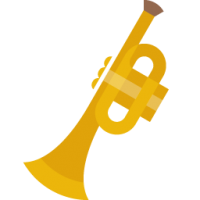 Commission a transcription, new arrangement, or original composition featuring trumpet
Commission a transcription, new arrangement, or original composition featuring trumpet
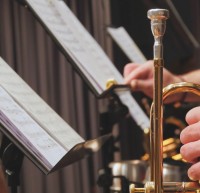
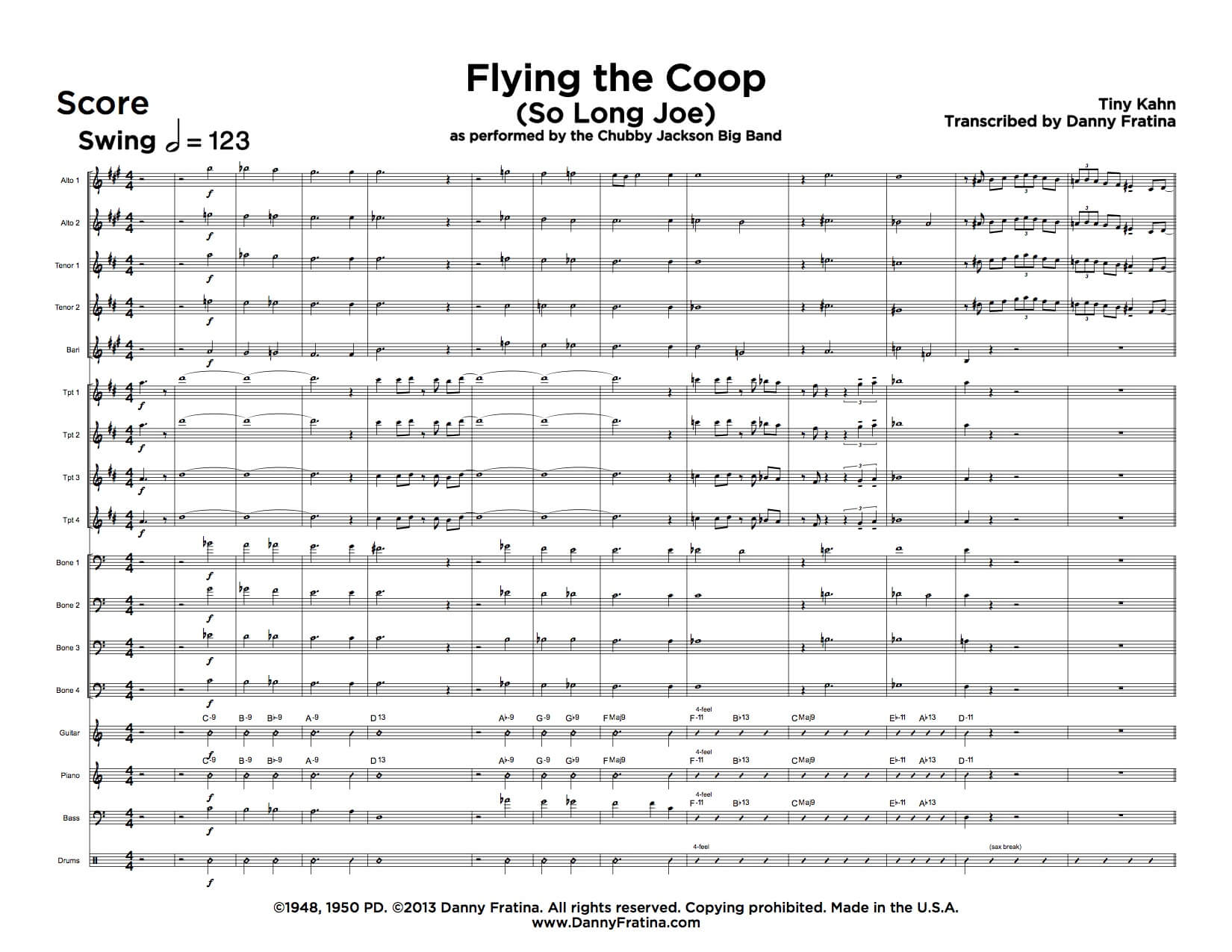
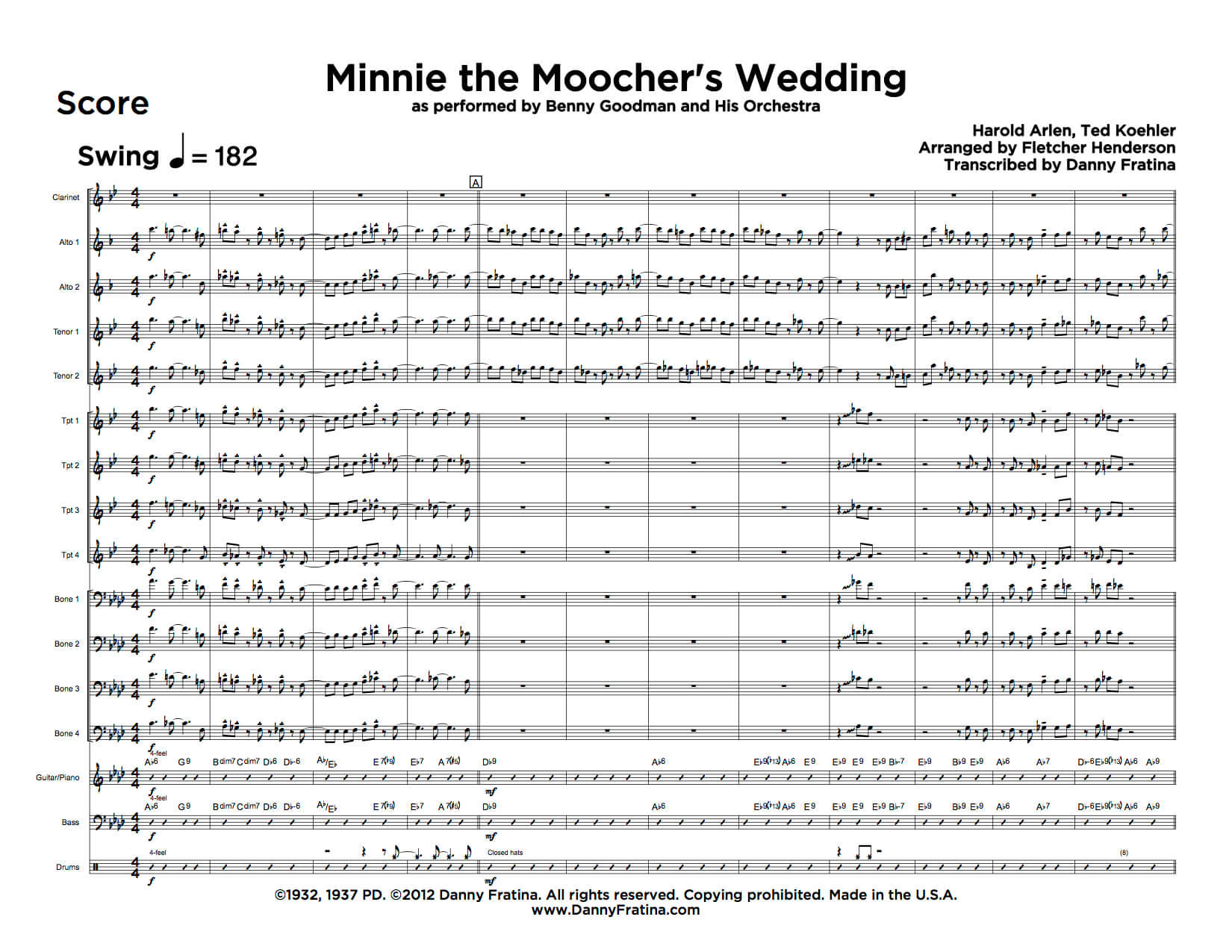
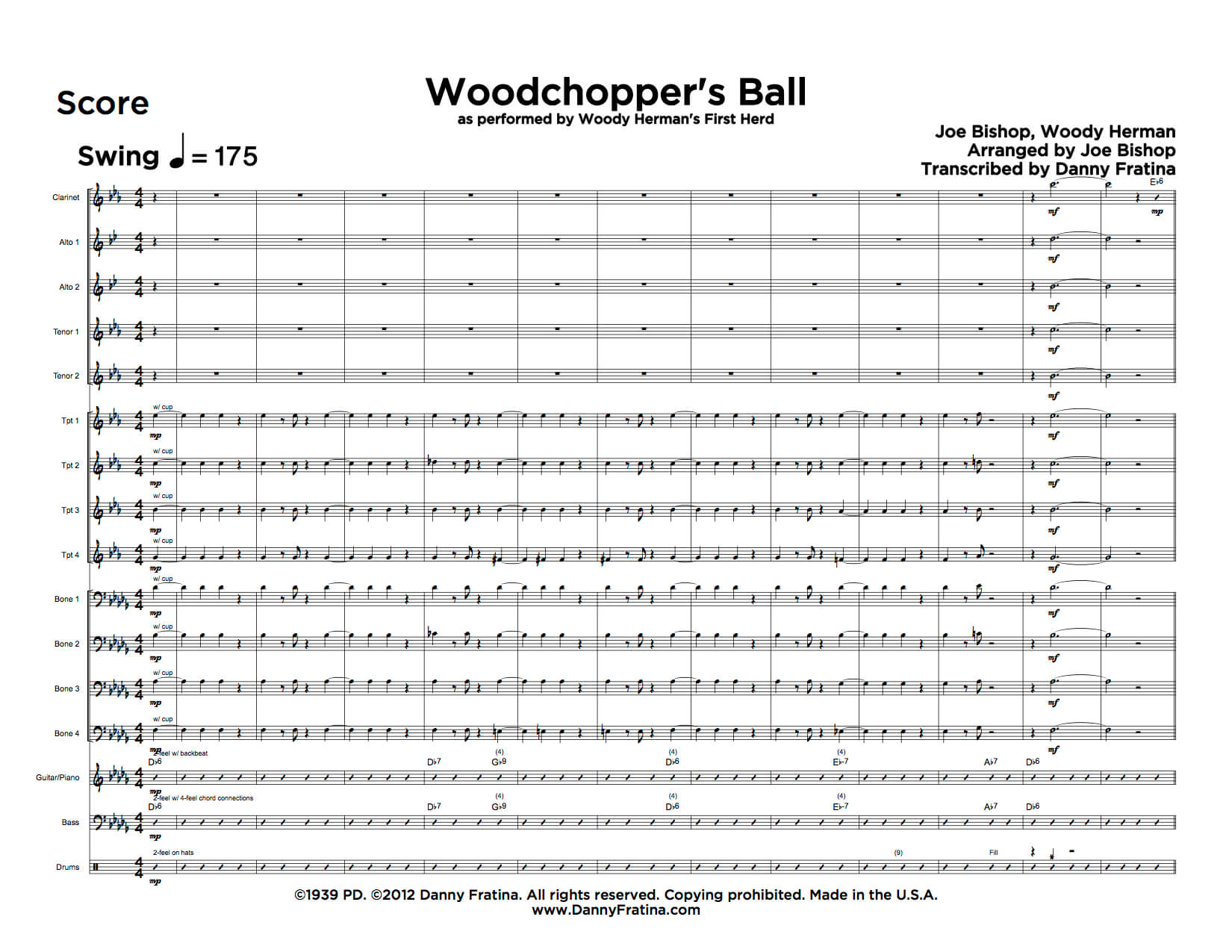

Talking about lead trumpet players looking at that Kenton trumpet section photo. Al Porcino playing the 4th book and Buddy Childers plating the 3rd book and of course Ray Wetzel playing lead. Porcino the “jazz” lead player that doesn’t play jazz or as he correctly puts it, doesn’t improvise. I closely relate to this because I took Al’s place with Bill Holmans band when I went to LA and have been playing lead with his band for the last 35 years. I do improvise and consider myself a “jazz lead player” I have always considered Al as a jazz trumpet player. No he didn’t improvise but he played jazz through his interpretation of the music. He could swing. With Holmans band we still play the old chestnuts from the In a jazz orbit album. I wore that record out when I was a kid. Theme and Variation # 2 is one of my all time favorites and he calls it up quite often and as many times that I’ve heard it and played it the piece still creates hip swinging joy. As does Far down below , No Heat and After you’v Gone, indecently which I think has the hippest shout chorus ever written. The reason I’m referring to those charts is that when I play them I phrase them just like Al did which is the way they’re supposed to be phrased. Become one with the bass player, establish a pocket within a steady beat without rushing or dragging and let the music speak for itself. Al and I worked together with Rosemary Clooney we had a lot of agreement going. We just celebrated Holmans 93rd birthday. We rehearsed every Thursday at the Musicians Union till this virus thing hit. All big bands are out of business for awhile. Then Buddy Childers. What a musical lead player he was. The real deal. To handle the lead responsibilities all through that Kenton era ‘This is an Orchestra” “Innovation”s Orchestra” took massive hard hitting strength but he also had a delicacy to his playing. He would nail everything but effortlessly. I played a lot of shows with Buddy in Vegas and I learned so much from playing with him. He would never over blow. My number one trumpet axiom for jazz or lead is “use the least amount of air to get the job done to it’s fullest”. and for my money the art of swinging is “Stay on top of the beat but don’t rush” I enjoyed reading through your piece on lead, 2nd, bass, drums etc. You mentioned that Maynard was a high note player and didn’t play so much lead which is true but one of the first lead gigs I ever had was with Maynards band. We had 3 trumpets and occasionally on certain charts he would come back up to the section making it 4 and play lead and let me tell you his airstream was like a controlled tornado. I’ve never experienced anything like that feeling since. Being next to him in a section is beyond words which makes me wonder why I’m talking about it. I saw “leave a Comment” on lead trumpet so I left one. Keep Swinging.. Carl Saunders